Natural paint is made with naturally occurring raw ingredients that are biodegradable and nontoxic. Natural paint ingredients include clay, chalk, marble, casein, lime, and earth pigments. Unlike the conventional paints that line the shelves of your local home improvement store, truly natural paints contain no petrochemical ingredients.
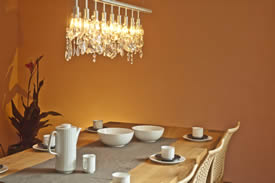
Unearthed clay roll-on plaster is a natural, zero-VOC finish that you apply with a brush or roller. It mimics the texture of traditional earth plasters, but also blends well with modern decor.
Conventional latex paints (even the zero-VOC versions) contain many petrochemical ingredients, which are ingredients that began as crude oil and were highly processed to create a host of synthetic ingredients that perform various functions in the paint, such as binding the paint to the wall, tinting the paint, or making it a thin consistency that can be rolled on.
Natural paint relies on the inherent qualities of natural ingredients that can be used as binders (such as casein, a protein glue), fillers (such as marble, which provides opacity and whiteness), and pigments (such as earth pigments that derive natural color from their mineral content). A variety of different unique natural paint types exist, and include clay paint, milk paint, and lime paint. Most natural paints, including the entire line of paints by Unearthed Paints, are 100% zero-VOC and safe to use while pregnant.
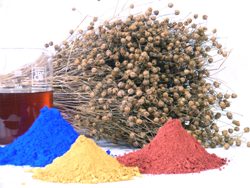
Natural earth and mineral pigments, rather than the synthetic colorants found in latex paints, are used to color natural paint.
Natural paints are made with minimally-processed, naturally-occurring ingredients.
Many natural paints are sold in a powder form. You just add water and mix with a hand held mixer or a paint stirrer attachment on an electric drill. Powdered paints include clay paint and casein paint (such as Unearthed’s Vega Paint). Offering these paints as a powder means that natural paint manufacturers do not have to add chemical preservatives to prevent them from spoiling. It also significantly reduces the energy required for shipping, making them among the greenest paints on the market.
Natural Paint: Used by People Around the World for Millenia
People have been using natural paints for thousands of years. Aboriginals in Australia have produced intricate works of art using paint made from natural, locally available ingredients, including richly hued ocher pigments. These ancient indigenous paintings survive today, and some date back as far as 50,000 years. Cave paintings at Grotte Chauvet in France are thought to be more than 30,000 years old. In India, yellow paint was historically created by with the urine from cows that were fed mango leaves. Across cultures, people have been captivated by color and driven to beautify their surroundings and express themselves through the use of paint.
Although ancient paint recipes differ slightly, they share a common reliance on natural ingredients that can be obtained with minimal processing from the local earth, plants and animals. These ancient paints were applied with feathers, chewed up sticks, and brushes made out of animal hair. Ancient paintings can be found across the globe, a testament to the enduring durability and beauty of natural paint.
Today, as consumers demand the healthier and greener alternatives to conventional latex paints that contain harmful VOCs and other chemicals, natural paint is making a comeback. The natural paint that is available on the market today is the result of thousands of years of evolution in paint knowledge that has been handed down through the generations. The recipes have been slightly refined over time, but have not been significantly altered from those first developed by ancient peoples.
What are the advantages of natural paint?
Natural paints are the healthiest choice for people with allergies or chemical sensitivities, pregnant women, young children, and anyone who is concerned about the chemicals they bring into their homes. Unlike conventional paints, which contain long chemical ingredient lists that manufacturers do not fully disclose, natural paints are made with a handful of easily-identifiable ingredients which in some cases is easy to ascertain by just reading the paint’s label (Unearthed Paints provides a full ingredient list on the front of every label.)
Using natural paints is also the most environmental sound way to paint your home. Choosing natural paints reduces the amount of toxins in the air, water, and earth because the production of natural paints is less energy-intensive than conventional paint production and does not result in toxic waste. Natural paints are biodegradable, which means that they can return to their natural cycles at the end of the paint’s useful life.
Another major difference between natural paints and their petrochemical counterparts is that natural paints are breathable, which means that they will allow any moisture that gets under the paint to naturally dry out. In most cases, failure of a conventional paint is due to trapped moisture that eventually leads to peeling, cracking or blistering. Natural paints contribute to a positive room climate and regulating humidity.
The finishes that natural paint provides are considered by many to be much richer in color, texture, and hue than conventional latex paints. Natural paint comes in a very wide selection of colors that harmonize well with any decor.
But are they durable?
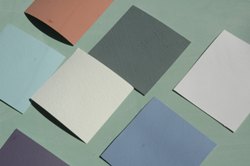
Natural paints come in a wide range of colors and types.
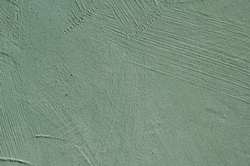
Natural paints have more texture than latex paints.
Natural paints are very durable and will even outperform conventional latex paints in many instances. Indeed, natural paints continue to survive in great condition after hundreds of years in buildings such as the Sistine Chapel. However, unlike latex paint, which essentially forms a thin layer of plastic on your wall, natural paints may be less resistant to heavy scrubbing, particularly when the surface is freshly painted. (Natural paints continue to get stronger over the months and years following application.) Scrubability has become a typical performance indicator in the paint industry, but in reality, few people ever scrub their walls. If you want a very durable surface, consider a soaped or waxed lime paint, which is slightly glossy and with increased dirt and water resistance. If you require the most durable finish possible, Unearthed Gecko Paint is a very durable natural paint option. Keep in mind that you should avoid using clay paints and casein paints in rooms that are consistently humid (such as bathrooms, enclosed kitchens, and homes in humid climates). Use lime paints or Unearthed’s Gecko Paint for such applications. Unlike conventional paint, which contains chemical biocides to prevent mold growth, natural paints instead rely on the natural, mold-resistant properties of ingredients like lime.
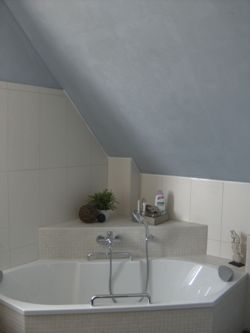
Lime paint is an excellent eco-friendly finish for bathrooms, kitchens, and humid climates because lime is naturally resistant to mold growth.
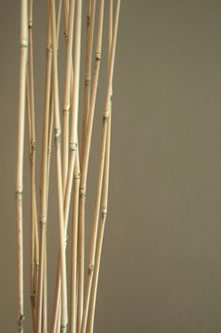
People have been painting with milk paint for thousands of years. Unearthed's version of milk paint, Vega, has been refined to eliminate the need for animal products, making it even greener and a great choice for vegans.
Additional information and to order natural paints.
Article author: Jessica Pfohl
